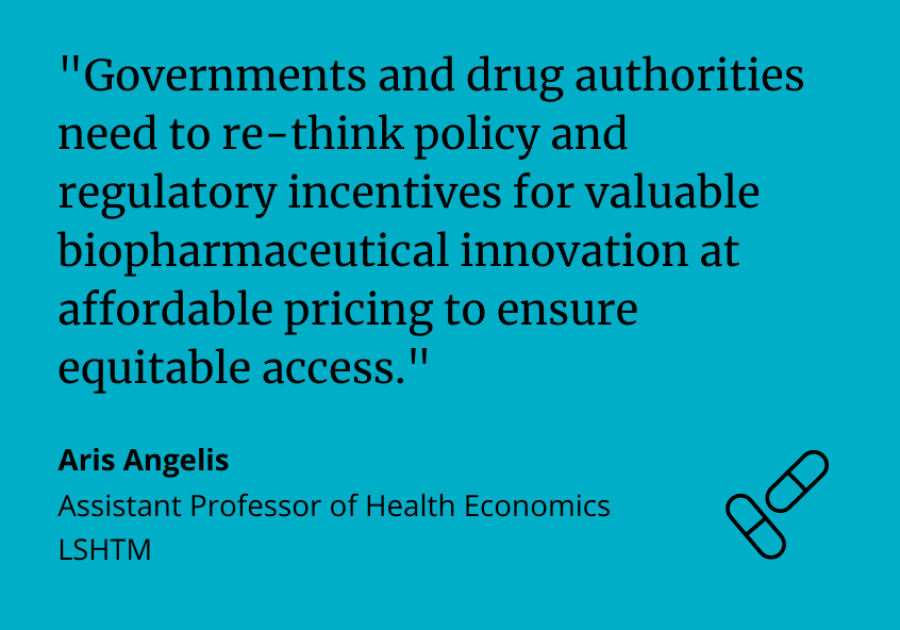
Concerns about the prices of medicines have grown over recent years. British legislators will this year renegotiate the terms of the pricing and access scheme for branded medicines between the Government and the pharmaceutical industry, seeking to control growth in prices. In 2020, the European Commission adopted a new European Pharmaceutical Strategy intended to ensure access to medicines while supporting a competitive pharmaceutical industry and will soon announce a new package designed to ensure access to affordable medicines to all EU patients, foster innovation, and support the global competitiveness of the EUs pharmaceutical industry. American legislators have recently passed new legislation allowing the largest US public health care payer, Medicare, for the first time to negotiate prices of some drugs, cap out-of-pocket spending for older patients, and penalise companies that raise drug prices at a rate faster than inflation.
Concerns about drug prices seem justified. In the US, estimated net prices of newly launched prescription drugs increased from a median US$1,376 in 2008 to US$159,042 in 2021, with mean net prices increasing by 10.7% per year. At one extreme, a wave of new and expensive treatments are expected to enter the market over the next few years, including tens of new gene therapies for rare and severe diseases, priced in the millions of US dollars.
The biopharmaceutical industry has long argued that high prices are needed to sustain research and development (R&D) costs. Given the large financial risk assumed by its shareholders and other investors to bring new medicines to the market, companies frequently point out how investors could easily shift their investments to other more profitable and less risky sectors where they could make larger and safer returns on their investments. There are, however, reasons to question these arguments: the pharmaceutical industry is one of the most profitable sectors; there seems to be no association between how much drug companies spend on R&D and the prices they charge for new medicines; and governments already provide a range of incentives, including funding for research the industry draws on and tax breaks for investments.
As we show in our latest Analysis in the British Medical Journal, the largest biopharmaceutical companies over the past two decades have consistently been spending more on selling, general and administrative (SG&A) activities (a heading that includes almost all business costs not directly attributable to manufacturing a product or performing a service, including marketing and advertising) than on R&D, which includes both preclinical and clinical research. More precisely, between 1999 and 2018, the largest 15 biopharmaceutical companies earned a total of US$7.7 trillion and spent US$2.2 trillion on SG&A activities but only US$1.4 trillion on R&D. In most years, these companies also spent more on buying back their own stocks, a practice that raises share prices and benefits shareholders and executives with stock options, than on R&D. Taken together with evidence that most new medicines offer little added benefit over existing therapies, this makes us and our co-authors question the claim that ever-rising high drug prices are really necessary to ensure that companies continue investing in R&D to generate the innovation needed for better drugs.
In theory, the biopharmaceutical industry could generate more medically-valuable innovation with existing resources, without passing R&D costs on to patients and healthcare systems via increasingly unaffordable prices. For this to happen however, government action will be needed along the entire lifecycle of new medicines. Early lifecycle actions could range from reforming national patent systems to making patent awards more stringent as well as the smarter allocation of public research funds with retention of ownership that can be leveraged to support affordable pricing. Other examples for later stages in medicines’ lifecycle could include raising evidence standards for market authorisation by requiring companies to establish added therapeutic value, and reforming pricing and reimbursement systems to reward companies that develop drugs that provide added clinical benefit.
A transition is needed towards strengethening the development of therapeutically-superior drugs that can enhance patient outcomes, possibly including a shift of more resources towards R&D activities while prioritising disease areas with clinical unmet needs. Therefore, governments and policy makers, together with relevant national competent drug authorities and payer organisations, need to re-think the appropriate policy and regulatory incentives for valuable biopharmaceutical innovation at affordable pricing. This will help improve the world’s population while also ensuring equitable access.
Our postgraduate taught courses provide health practitioners, clinicians, policy-makers, scientists and recent graduates with a world-class qualification in public and global health.
If you are coming to LSHTM to study a distance learning programme (PG Cert, PG Dip, MSc or individual modules) starting in 2024, you may be eligible for a 5% discount on your tuition fees.
These fee reduction schemes are available for a limited time only.
